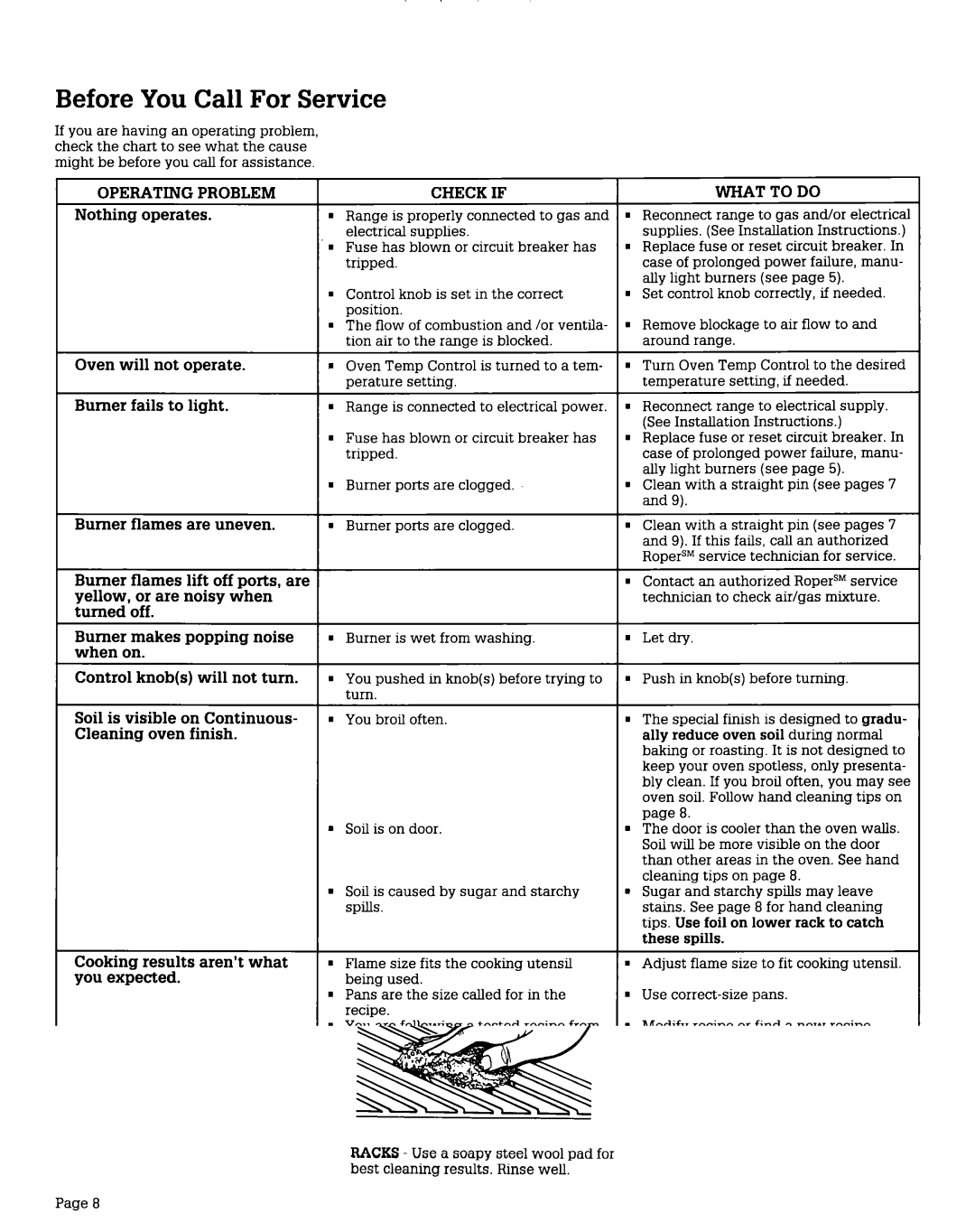FGPZlOV, FLP330V, FLP320V, FLPZlOV, FGC355V specifications
The Whirlpool FGP series of gas ranges, which includes models FGP345V, FGP355V, FGP335V, FLP310V, FGP325V, and FGP320V, exemplifies modern cooking technology blended with style and functionality. These ranges stand out due to their robust build quality, user-friendly features, and innovative technologies designed to enhance the cooking experience.One of the most notable features of this series is the precise temperature control provided by the advanced gas burners. Each model typically comes with multiple burners, offering a range of simmering and high-heat options, catering to various cooking tasks from boiling pasta to searing meats. The burners are designed with efficiency in mind, enabling users to achieve the desired cooking results quickly and effectively.
The cooking surface is crafted from durable materials, ensuring easy cleaning and maintenance. Most FGP models feature a continuous grate design, allowing cookware to slide easily between burners without the hassle of lifting pots. This design also enhances safety, providing stability for large and heavy pots and pans.
In terms of oven technology, the Whirlpool FGP ranges boast a large capacity, making them ideal for family meals and entertaining. The even baking system ensures uniform heat distribution within the oven, significantly reducing the chances of hot spots that can lead to uneven cooking. Additionally, some models include a self-cleaning feature, allowing users to maintain cleanliness and hygiene without the need for harsh chemicals.
Energy efficiency is another hallmark of the FGP series. Many models integrate features designed to minimize energy consumption, such as energy-efficient burners and insulation that retains heat, ensuring optimal cooking performance while being mindful of energy use.
The design aesthetic of the FGP series is both modern and timeless. Available in various finishes, including stainless steel and black, these ranges can seamlessly integrate into any kitchen decor. The control knobs and easy-to-read displays are intuitively placed for enhanced usability, making the cooking process straightforward, even for novice chefs.
Safety is a crucial consideration in the design of Whirlpool FGP models. They often include features such as flame failure devices that sense if the flame goes out and automatically cut off the gas supply, preventing hazardous leaks.
Overall, the Whirlpool FGP345V, FGP355V, FGP335V, FLP310V, FGP325V, and FGP320V gas ranges deliver a perfect blend of cutting-edge technology, user-centric design, and safety features, making them standout options for anyone looking to elevate their cooking experience.

